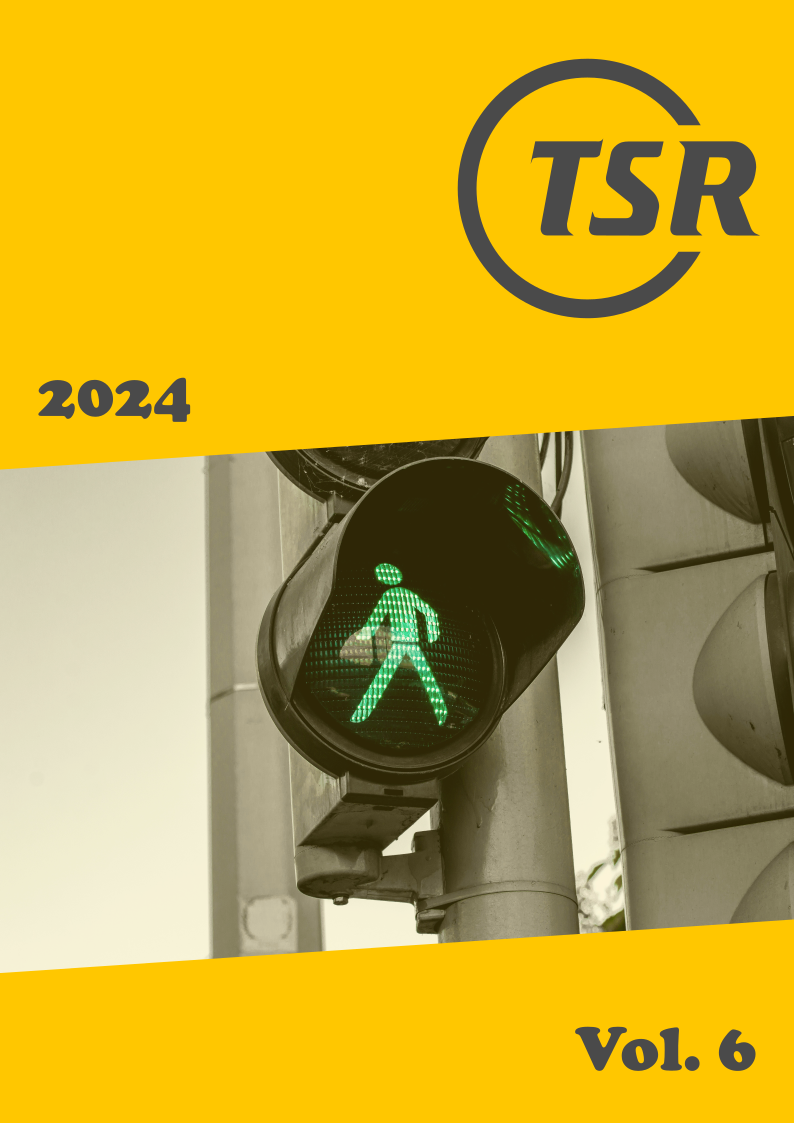A note on Tesla's revised safety report crash rates
DOI:
https://doi.org/10.55329/llfl7748Keywords:
Advanced Driver Assistance Systems (ADAS), autopilot, crash rate, road safetyAbstract
Between June 2018 and December 2023, Tesla released quarterly safety reports citing average miles between crashes for Tesla vehicles. Prior to March 2021, crash rates were categorized as (1) with their SAE Level 2 automated driving system Autopilot engaged, (2) without Autopilot but with active safety features such as automatic emergency braking, and (3) without Autopilot and without active safety features. In January 2023, Tesla revised past reports to reflect their new categories of with and without Autopilot engaged, in addition to making small adjustments based on recently discovered double counting of reports and excluding previously recorded crashes that did not meet their thresholds of airbag or active safety restraint activation. The revisions are heavily biased towards no-active-safety-features—a surprising result given prior research showing that drivers predominantly keep most active safety features enabled. As Tesla's safety reports represent the only national source of Level 2 advanced driver assistance system crash rates, clarification of their methods is essential for researchers and regulators. This note describes the changes and considers possible explanations for the discrepancies.
Downloads
References
Blanco, M., J. Atwood, S. Russell, T. Trimble, J. McClafferty, M. Perez (2016), 'Automated Vehicle Crash Rate Comparison Using Naturalistic Data', Virginia Tech Transportation Institute.
Dixit, V. V., S. Chand, D. J. Nair (2016), 'Autonomous vehicles: Disengagements, accidents and reaction times', PLOS ONE, 11(12), e0168054. DOI: https://doi.org/10.1371/journal.pone.0168054
Goodall, N. J. (2024), 'Normalizing crash risk of partially automated vehicles under sparse data', Journal of Transportation Safety & Security, 16(1), 1–17. DOI: https://doi.org/10.1080/19439962.2023.2178566
Goodall, N. J. (2021), 'Comparison of automated vehicle struck-from-behind crash rates with national rates using naturalistic data', Accident Analysis & Prevention, 154, 106056. DOI: https://doi.org/10.1016/j.aap.2021.106056
Goodall, N. J. (2023), 'Comparability of automated vehicle crash databases', arXiv, 2308.00645.
Goodall, N. J. (2023), 'A note on Tesla's revised safety report crash rates', arXiv, 2311.06187.
HLDI, (2017), 'Tesla Model S driver assistance technologies', Highway Loss Data Institute, 34(30).
Karpathy, A. (2020), 'AI for full-self driving at Tesla', Matroid Scaled Machine Learning Conference, 16–27 February 2020.
Kwak, S. G., J. H. Kim (2017), 'Central limit theorem: the cornerstone of modern statistics', Korean Journal of Anesthesiology, 70(2), 144–156. DOI: https://doi.org/10.4097/kjae.2017.70.2.144
Leslie, A. J., R. J. Kiefer, C. A. Flannagan, B. A. Schoettle, S. H. Owen (2022), 'Analysis of field effects associated with the GM super cruise system', University of Michigan Transportation Research Institute, UMTRI-2022-3.
Nedelea, A. (2022), 'Any Tesla driver can now join full self-driving beta regardless of safety score', INSIDEEVs, 24 November 2022.
NHTSA, (2021), 'Incident reporting for automated driving systems and Level 2 advanced driver assistance systems', National Highway Traffic Safety Administration, Standing General Order 2021-01.
NHTSA, (2013), 'How vehicle age and model year relate to driver injury severity in fatal crashes', National Highway Traffic Safety Administration. Research Facts, DOT HS 811 825.
Ogden, J., E. Summers, S. Walker (2023), 'Know(ing) infrastructure: the Wayback Machine as object and instrument of digital research', Convergence: The International Journal of Research into New Media Technologies, 30(1), 167–189. DOI: https://doi.org/10.1177/13548565231164759
Quality Control Systems, (2019), 'NHTSA's implausible safety claim for Tesla's autosteer driver assistance system', Quality Control Systems Corporation.
Reagan, I. J., J. B. Cicchino, L. B. Kerfoot, R. A. Weast (2018), 'Crash avoidance and driver assistance technologies—are they used?', Transportation Research Part F: Traffic Psychology and Behavaviour, 52, 176–190. DOI: https://doi.org/10.1016/j.trf.2017.11.015
SAE, (2021), ' Taxonomy and definitions for terms related to driving automation systems for on-road motor vehicles', SAE International, J3016_202104.
Scanlon, J. M., K. D. Kusano, L. A. Fraade-Blanar, T. L. Mcmurry, Y.-H. Chen, T. Victor (2023), 'Benchmarks for retrospective automated driving system crash rate analysis using police-reported crash data', arXiv, 2312.13228. DOI: https://doi.org/10.1080/15389588.2024.2380522
Schoettle, B., M. Sivak (2015), 'A preliminary analysis of real-world crashes involving self-driving vehicles', University of Michigan Transportation Research Institute, UMTRI-2015-34.
Shapiro, S., T. Kouri Kissel (2022), 'Classical logic', in Zalta, E. N., U. Nodelman (eds.), The Stanford Encyclopedia of Philosophy.
Teoh, E. R., D. G. Kidd (2017), 'Rage against the machine? Google's self-driving cars versus human drivers', Journal of Safety Research, 63, 57–60. DOI: https://doi.org/10.1016/j.jsr.2017.08.008
Tesla, (2023), 'Tesla Model S owner's manual', Tesla Inc.
Tesla, (2023), 'Q4 and FY 2022 update', Tesla Inc.
Tesla, (2022), 'Tesla vehicle safety report', Tesla Inc., Wayback Machine 21 January 2022.
Tesla, (2023), 'Tesla vehicle safety report', Tesla Inc., Wayback Machine 5 January 2023.
Tesla, (2023), 'Tesla vehicle safety report', Tesla Inc., Wayback Machine 8 January 2023.
Tesla, (2024), 'Tesla vehicle safety report', Tesla Inc., Wayback Machine 24 February 2024.
Tesla, (2023), 'Tesla Model 3 owner's manual', Tesla Inc.
Published
How to Cite
Issue
Section
License
Copyright (c) 2024 Noah J. Goodall

This work is licensed under a Creative Commons Attribution 4.0 International License.








